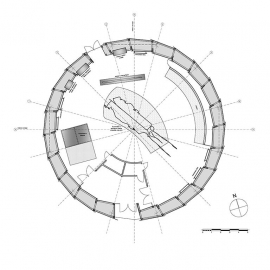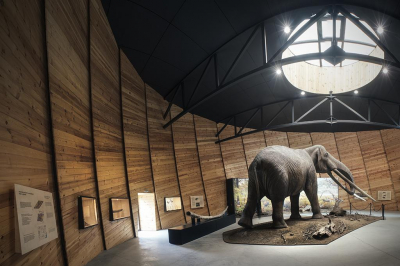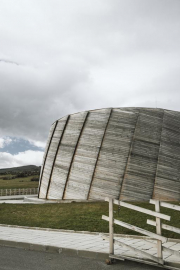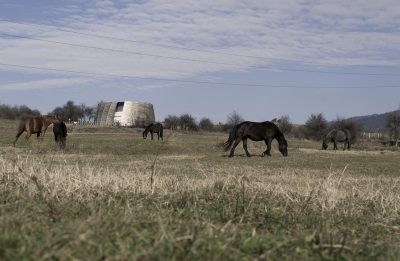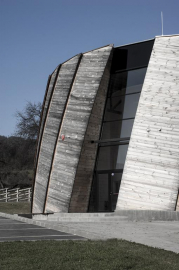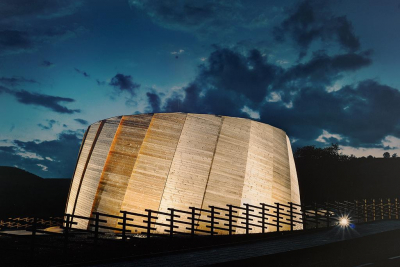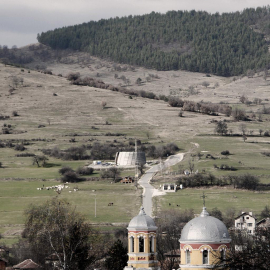Paleontological Museum
At the end of the 20th century, the largest amount of fossils remains dating from the Pliocene Epoch were discovered and excavated in the Rhodope village of Dorkovo. The bones were over five million years old and belonged to some very rare species, including the largest animal from that period, the mastodon Anancus avernensis. In 2010, a decision was made to build a thematic museum of paleontology dedicated to the discoveries and financed with European funds.
The project presents a small part of these rich findings located near the excavation site. Our wish was to create a space that would interact as well as possible with the environment preserving the overall impression of the landscape, using natural materials typical of the region and the traditional ways of building in order to make a modern structure that would correspond to the local architectural style.
Our idea was to create a lid preserving the remains and the time.
We chose an open plan space in the form of a dome inspired by the old woven beehives that would make a strong impact and give a feeling of antiquity. Our main concern was to preserve the findings while displaying them in a rather dramatic, impressive and intriguing way. The recreation of a mastodon displayed at the centre, right below the only skylight, emphasized the grandeur of those ancient animals.
The final result, a building of 315 square metres situated on a plot of nearly 0.2 hectares, has a typical envelope and fencing structure inspired by the traditional storehouses and barns in the Rhodope Mountains and is made by local manufacturers using wood from nearby felling sites. The impression of an uninterrupted spiral formed by the façade panels represents the idea of the Evolutions constant movement.
Generally, we have tried to create a definitive symbiosis between the exhibition and the building, the inside and the outside, the present and the past.
The area around the village of Dorkovo is one of the most ecologically clean regions in Bulgaria, with beautiful nature and many mineral springs.
We have managed to preserve the natural surroundings while giving a new look to the valley for the public and visitors to enjoy.
Today the museum is one of the most visited tourist and educational destinations in our country. It is included in the list of the 100 National Tourist Sites of Bulgaria.


